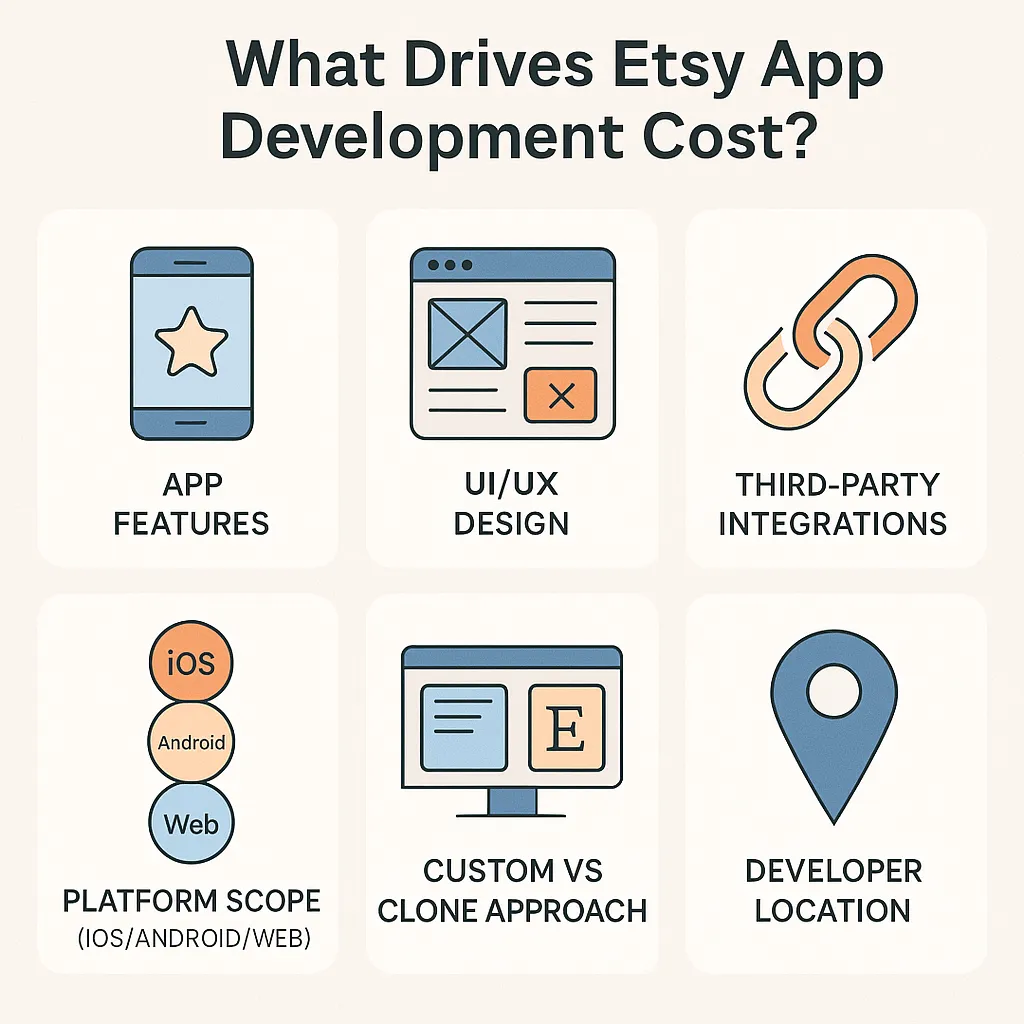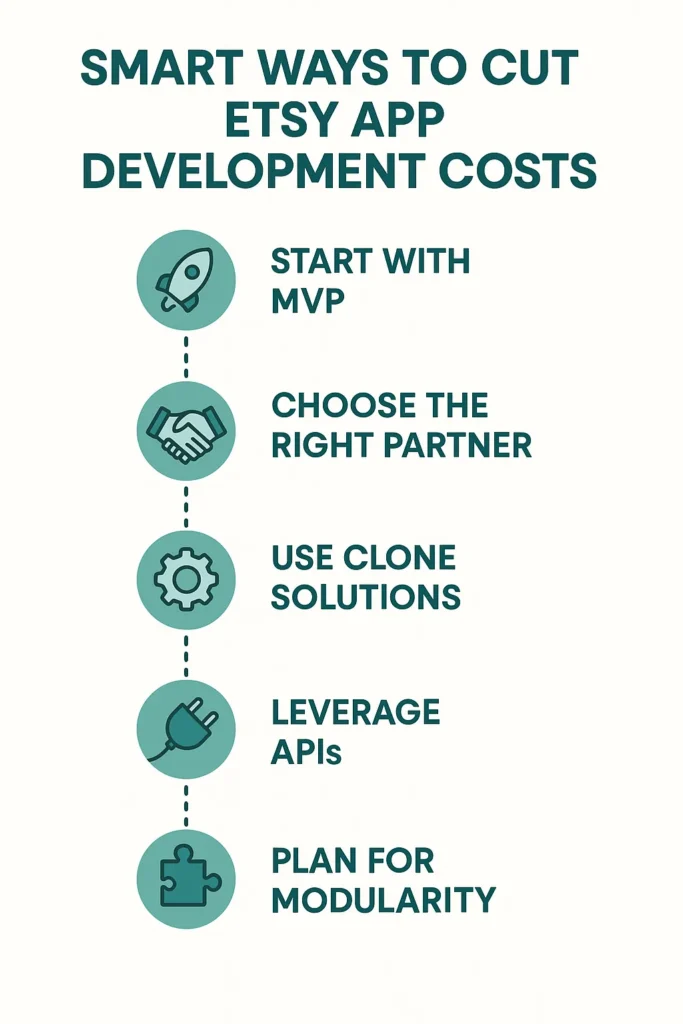Etsy App Development Cost in 2025 | Full Pricing Guide
Create a powerful, customizable streaming solution with Miracuves’ Etsy, equipped with high-performance features and next-gen technology.
Planning to launch a custom marketplace like Etsy? Before diving into vendor features or payment integration, the first thing every ecommerce founder needs to ask is:
What’s the cost to develop an Etsy-style app?
Etsy isn’t just a product listing platform — it’s a full-stack creative marketplace with real-time inventory, seller dashboards, reviews, shipping options, and built-in payments. Recreating that experience demands thoughtful architecture and a clear budget strategy. If you’re exploring technical options, reviewing an Etsy clone solution can help you understand what goes into replicating a similar feature set.
Whether you’re a startup targeting niche handmade goods or an entrepreneur building a global artisan hub, knowing the Etsy app development cost helps you estimate resources, attract investors, and avoid costly scope creep.
In this guide, we’ll break down the key cost drivers, regional development rates, feature complexity pricing, and how to optimize your budget without compromising quality.

Key Factors That Influence Development Cost
There’s no fixed price tag for developing an Etsy-style app. Your budget depends on the scale of your platform, the user experience you want to deliver, and how your tech is built.
Here are the major cost drivers:
App Features & Scope → From buyer/seller dashboards to reviews, chat, payments, and advanced filters — every extra feature increases build time and cost.
UX/UI Design Quality → A marketplace is only as good as its user experience. Clean design, responsive layout, and intuitive flows demand expert-level front-end work.
Third-Party Integrations → Payment gateways, tax calculators, shipping APIs, and analytics tools all add integration costs and potential license fees.
Platform Coverage (iOS, Android, Web) → Building for all three from the start means higher cost, but broader reach.
Custom Build vs Clone Script → A clone solution is faster and more budget-friendly, but fully custom builds offer long-term flexibility and scalability.
Backend Complexity → Real-time inventory, vendor onboarding, and user messaging require a solid backend infrastructure that scales.
Developer Location → U.S. and Western Europe teams charge more than counterparts in Asia or Eastern Europe — but quality teams exist in every region.
Etsy App Development Cost by App Complexity
To give you a clearer picture, here’s a breakdown of average development costs based on app complexity.
This includes UI/UX design, front and back-end development, QA testing, and basic post-launch support.
|
App Type
|
Estimated Cost Range (USD)
|
Description
|
|---|---|---|
|
MVP (Minimum Viable Product)
|
$15,000 – $30,000
|
Core features like product listings, shopping cart, user profiles, payments.
|
|
Standard Version
|
$30,000 – $70,000
|
Adds features like seller dashboards, reviews, filters, notifications, coupons.
|
|
Full-Featured App
|
$70,000 – $150,000+
|
Includes advanced search, custom UI/UX, AI suggestions, multi-language support, analytics, and full scalability.
|
Note: These are development-only costs. Marketing, infrastructure, and legal setup are separate line items.
Need a modular build? Miracuves can help you launch with a lean MVP and scale feature-by-feature as your business grows.
Average Cost Estimates by Region
Where you hire your development team has a big impact on cost. Here’s a breakdown of average rates and project estimates by region:
|
Region
|
Hourly Rate (USD)
|
Typical Cost for Standard App
|
|---|---|---|
|
North America
|
$100 – $200/hr
|
$100,000 – $200,000+
|
|
Western Europe
|
$80 – $150/hr
|
$80,000 – $160,000+
|
|
Eastern Europe
|
$40 – $80/hr
|
$40,000 – $90,000+
|
|
India & Southeast Asia
|
$20 – $50/hr
|
$20,000 – $60,000+
|
Looking to save on costs without sacrificing quality? Choosing the right offshore team can reduce expenses while still delivering enterprise-grade results.
Cost Breakdown by Development Stage : Etsy Clone
Understanding how your budget is distributed across the entire development lifecycle can help you plan smarter and avoid cost overruns. Below is a typical breakdown of where your money goes during Etsy clone app development:
|
Development Stage
|
Estimated % of Total Cost
|
Includes
|
|---|---|---|
|
Discovery & Planning
|
5–10%
|
Market research, competitor analysis, defining user personas, feature scoping, technical requirements.
|
|
UI/UX Design
|
10–15%
|
Wireframing, prototyping, responsive design, visual branding, user experience mapping.
|
|
Frontend & Backend Dev
|
40–50%
|
Core feature development, database architecture, APIs, payment integrations, dashboard and logic build.
|
|
Testing & QA
|
10–15%
|
Manual and automated testing, bug fixing, device/browser compatibility checks, performance tuning.
|
|
Deployment & Launch
|
5–10%
|
App store submission (Android/iOS), server setup, production deployment, performance monitoring tools.
|
|
Maintenance & Updates
|
10–20%
|
Post-launch bug fixes, new features, server maintenance, user support, compliance updates.
|

How to Reduce Etsy App Development Costs (Without Compromising Quality)
A custom marketplace takes serious investment — but there are ways to optimize your budget smartly.
Here’s how:
- Start with an MVP → Focus on the essentials like listing, checkout, and vendor login. Launch quickly and gather user feedback.
- Choose the right development partner → Work with a team that has marketplace experience and offers full-cycle support.
- Use clone scripts or white-label solutions → This cuts development time and saves on early-stage costs. Many startups opt for clone-based development to move faster without draining capital early on.
- Leverage open APIs → Avoid building shipping or tax logic from scratch — use proven third-party integrations.
- Build modularly → Architect your platform so features can be added in phases without rebuilding the core app.
A strategic build lets you grow at your pace, reduce technical debt, and manage capital efficiently.
Choose the Right Development Partner
Even with a clear vision, launching a marketplace app is a big step — and the right development team can make or break your success. You don’t just need coders — you need a partner who understands ecommerce, growth, and platform architecture.
Here’s what to look for:
Marketplace and ecommerce app experience
Portfolio of high-performance multi-vendor platforms
Transparent pricing and agile development practices
End-to-end services from design to deployment
Support for future scaling and upgrades
At Miracuves, we’ve helped global startups bring Etsy-like apps to life. Whether you need a fast MVP or a full-featured marketplace, we deliver solutions built for scale, performance, and user delight.
Let us handle the build — so you can focus on building your brand and seller community.
Conclusion
The cost to develop an Etsy-style app depends on your features, region, and development model. Whether you’re launching with a $30,000 MVP or building a $250,000+ marketplace, the right planning and tech partner can help you launch fast and scale smart.
Ready to bring your marketplace vision to life?
Talk to Miracuves for a custom quote and a tailored development roadmap.
Want to explore more about marketplace features, monetization strategies, or launch tactics? Browse the rest of our clone app series.
Frequently Asked Questions
Development costs typically range from $30,000 for an MVP to $250,000+ for a full-featured, scalable multi-vendor marketplace.
Yes, using a prebuilt or white-label Etsy clone solution can significantly reduce development time and cost — often by 40–60%. These scripts come with core features built-in and are customizable to match your branding and functionality needs.
Yes. Clone scripts significantly reduce initial cost and time-to-market. They’re ideal for early-stage startups testing their model.
An MVP takes 3–4 months, while a full custom platform may require 6–9 months, depending on complexity and integrations.
Miracuves brings ecommerce expertise, customizable clone solutions, and full-stack development services to launch faster and grow with confidence.



